As it is a Monday, and I’ve recently established a theme for the day, I feel it’s time to once again tackle the world of Mythology, specifically continuing my tour of world mythologies. But, seeing also that it’s the Christmas season, I felt the urge to do something a bit festive. So, with the mission statement of trying to expand my mythological horizons, I went looking for unusual or unique myths from around the world tied into this time of the year. What I found, though, was that there was one figure known all over the world which had origins so complex that, even though people know of him almost everywhere, most don’t have the slightest clue how complex he is.
Who could it be? This fat jolly bastard.
Because what we’ve got here is a fusion of figures so distinct from each other that the end product looks like all of them and none of them at the same time. Basically, he’s a holiday smoothie. And so, for the first time, Alternative Mythologies will look towards Europe and dig deeper into the figure we know as…
Santa Claus
Many people know that Santa Claus was based on a real, living person, Saint Nikolaos of Myra, a 4th century Greek Bishop of the Temple of Myra in what is now known as Turkey. He was a solemn man with a very generous nature and an overwhelming personality.
But what a lot of people don’t realize, despite the fact they know Christmas itself has some pagan origins, is that Santa is also heavily influenced by regional figures throughout history. Given he was a man from Turkey, it is somewhat appropriate he has become a folklore turducken. With each passing century, a new figure seems to join the bundle and become part of the ever evolving figure. Some of these inclusions are practical, some of them are simply overlapping, but all of them have left a mark on the culture as a whole.
The first alternative, and probably most well known, is the figure of…
Father Christmas
One of the most common aliases for the figure of Santa is Father Christmas in many countries. Though the names today are interchangeable, when Father Christmas was first introduced as a concept he was a completely separate entity with vastly different characteristics. First of all, he wasn’t old, fat, or focused on children.
Rather, as a manifestation of the Christmas spirit, “Lord Christmas” was there to bring joy and revelry to adults, representing the feasts and festivities of the season and general idea of good will towards your fellow man. And, because people can’t just be excellent to each other, the kindly old figure that we’ve come to know today was generated specifically to calm the shit of people who just could not have their shit calmed.
The Puritans, buzzkill champions of the 16th and 17th centuries, made everyone feel like shit for not feeling like shit on the holidays. Drinking, eating, and enjoying the very act of living was a bit too excessive for the people with sticks so far up their asses that the British decided they were a little too stiff and voted them off the island centuries before that was even a thing. Ironically, some time after being voted off that island, they helped to establish a country best known for its excess when a group of Puritans settled on Plymouth Rock because (and this is totally true) they ran out of beer. So, clearly, it wasn’t the drinking they had the problem with – it was not being miserable.
However, because of the pressure being experienced from the Puritans, the embodiment of Christmas was evolved into a good natured, kindly older gentleman with a general message of “drink responsibly”. In essence, Father Christmas was a 17th century beer commercial for the sake of selling the idea of Christmas cheer.
Since this figure first appeared there have been many variations across Europe and Asia Minor. Most of these differentiate only slightly from the core, but one in particular took inspiration from the idea of Lord Christmas and included a touch of the original St. Nick into the mix: Père Noël.
The French Father Christmas, unlike most others, actually did focus on children and gift giving rather than getting tanked and singing off key. Following the traditions of Saint Nicholas, Père Noël would leave gifts in the shoes of children left out for him by the fireplace (an origin for the stocking tradition today) while the children would leave carrots and treats for his Donkey, Gui. If the children were good, Père Noël would leave gifts in the place of the carrots, usually small enough to fit into the shoes like candy, toys, or a bit of money.
However, as Father Christmas began to blur into other nationalities, so did Père Noël. And as Père Noël blurred with others it was inevitable that he started to take on the traits of the stranger, more wild figure of…
Sinterklaas
Now, looking at the name, you’re probably aware of two things about it:
- That’s the origin for the modern name “Santa Claus”
- That’s a Dutch version of “Saint Nicholas”
And you’d be right. But where as the original Saint Nicholas and the westernized Santa Claus are generally good dudes with no real issues, Sinterklaas travels with maniacs, monsters, and slave traders. For every version of Sinterklaas there is also an “associate” in the same way the Mafia used the word. And, as Sinterklaas plays good cop by giving out gifts to the good kids, the bad cop is off in the corner with your problem children beating the hell out of them or abducting them for parts unknown… likely speaking in a voice only properly executed by Christian Bale.
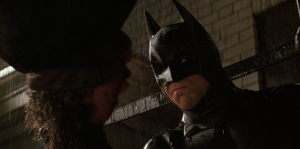
The first of these figures is a fellow known by many names ranging from Père Fouettard in French to Belsnickel in some Germanic regions.
And though he goes by those many names, the premise remains the same: he is there to whip your children for being little dicks all year. How severely he hits them is up for debate and often the punishment is meant only to scare the children rather than actually harm them. In fact, in some versions, he carries the whip just to scare the kid straight rather than use it. But if this version of things seems tame for you, let’s move onto something with a bit more nightmare fuel: The Krampus.
This here is the infamous Krampus, literally a horned demonic entity that just so happens to be in Sinterklaas’ possy as his right hand man. Krampus is a chained, hairy beast supposedly bound by the Christian church to suppress his evil and act as Sinterklaas’ heavy. Yes, in these traditions the devil does house calls and torments your children while Santa watches.
Visiting the homes of families with Sinterklaas, the tradition holds that Krampus brings a variety of objects to torture your little shit for you so you don’t have to. Birch branches and whips are interchangeable in the story, often depending on which the kid is most afraid of, while a bag or a tub may be strapped to his back for the kids who really have it coming.
These tradition hold that the bag is meant to take the kid, stuff them in it, and then abscond them to a distant location. This location varies from the warm vacationing spot known as Hell to the depths of Krampus’ somewhat less pleasant digestive tract. As this demonic creature tortures your children for your amusement or hands-off parenting methods, Sinterklaas watches like it’s his fetish.
And yet, that’s not the most controversial figure in the European celebrations for Christmas. To find that, you’re going to have to go to the Netherlands, where Sinterklaas is accompanied by Zwarte Piet, “Black Pete”, a figure who is far less terrifying to look at than Krampus but shares a similar trait of abducting your children. So why is Zwarte Piet so much more controversial than Krampus, considering Krampus is literally a devil from the depths of hell?
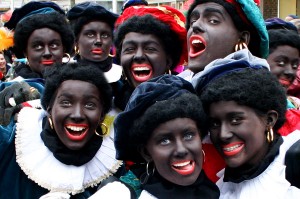
Now, at first glance, that looks kind of racist. On second glance, it’s not much better. Though some have argued that the practice is no longer associated with any particular race, the figure was created with a particular one in mind. Created in the 19th century and solidified in the 1850s, the figure of Zwarte Piet is not a magical entity or even just a misunderstood cultural reference, he’s a Moor from Spain there to kidnap your children just like the Krampus from neighboring regions.
The Moors were a people (often Berbers) who originated from the Islamic territories of North Africa. Much like the Europeans at the time, North Africa had a thriving slave trade for many centuries up until it ended roughly in the mid 19th century, fueled by the works of the pirates of the Barbary coast.
These pirates would travel along the coasts of Europe and kidnap people from the European continent to be taken back to be sold into slavery in Islamic lands. Thus, the fear of dark skinned Moors arriving by boat to port towns was a pretty commonplace thing that was strangely folded into the Christmas tradition as the kindly figure of Saint Nicholas became compliant with slave traders.
These people are universally portrayed in black face, wearing a jaunty cap and dressed like like a page. As they travel with Sinterklaas they, like the Krampus, would take bad children, stuff them in a burlap sack, and leave the country with them in tow. To add a little salt to the wound, the fact they were dressed as pages means that Zwarte Piet, while carrying out this kidnapping and possible slave trade, was actually the servant. Thus, Sinterklaas, the kindly figure giving out gifts, was actually the slave trader. And, as the kicker, they traditionally arrive by boat.
By now, I know what you’re probably thinking: “why are these people trying to make their children shit themselves in black-face or demon horns?!” And for that, you have to understand these traditions happen in primarily Germanic territories, and that means their traditions stem from a holiday older than Christmas, a time called Yule.
And to understand why Yuletide would make people do some fucked up things, you have to recognize that the guy in charge of Yule was
Jólnir
The lord of the Yuletide, the one who oversees it all, also known as… Odin.
That’s right, boys and girls, some of you knew this one was coming. But for those of you who didn’t, I’ll let you soak in the idea that the very first Santa figure in Europe was the Norse god of war and death, patron of Vikings and anyone else out to kick some ass for glory.
And, as is befitting Odin, the Yuletide was not so much a celebration of good cheer but a celebration of simply not being dead. This was the time of the year where shit got cold, supernatural forces had been unleashed on the world, and it made sense to burn a giant Yule log to keep warm while being happy that the coldest parts were almost over. You have to keep warm, after all – which is the real reason why they burned down so many villages, I’m sure.
During the Yuletide, Draugar, superhuman undead zombies, would roam the lands – tormenting the living. They smelled of decay, could change shape and size at will, had superhuman strength, and were vengeful as all hell. With the barrier between life and death at its thinnest, they would be free to rise from their graves and wander the land, bringing ill to any who would cross them.
And what was Odin doing during all of this? He was leading a massive fucking supernatural hunt – the Wild Hunt.
Held during the darkest months of the year, Odin would ride with a ghostly procession of fairies, gods, or lost souls. Any to witness this hunt would be either killed on the spot or kidnapped and taken to unknown lands. Some even believed that simply having the hunt pass you by would cause your soul to be ripped from your body and forced to join Odin’s party.
What were they hunting? Everything. If you were to cross it, you were gone, simple as that, either as prey or forced to join Odin on his crazed campaign to turn the snow-white world red with blood. Flying across the sky, Odin brightened the Yuletide festivities by reminding everyone that the only way to live right in the Norse lands was to be so Metal that nothing would dare to fuck with you. And so they followed his lead, singing, drinking, burning shit down and going on not fearing death while reminding each other not to get in his way until the All-Father’s blood lust was quenched.

The response Christians had to this was understandable.
Early Christian visitors kind of feared the Norse, for good reason. Discovering that Yuletide was held roughly at the time that Christmas (which had lined up with Saturnalia from the influence of the Romans), the early Christians did their best to just gently nudge the Norse into not burning their shit down and celebrating it for a couple days instead of a month.
Gradually the figure of Odin was assimilated into more Christianity friendly entities such as Sinterklaas, Father Christmas and their merry little bands. In the times since, some traditions now have Krampus or other figures leading the Wild Hunt, trying to separate the original Odin-y bits from the jolly fellow that’s been distilled over the last couple millennia.
It wasn’t the first time Christianity did something like this, it wasn’t even the last, but it was probably best to let the Norse keep their god in the celebrations for a few centuries so they didn’t realize your house was made out of the same shit as their Yule Logs.
Over time, Santa has folded many figures into his jolly form. We should probably be glad that he’s recovering from his death and darkness period. After all, the coat may be stained red by blood, the Christmas elves may be enslaved Dutch children, and he may have summoned the devil. But who else are we going to believe in?
Slash?
And, for this Christmas, if you’re getting someone an eReader – don’t forget my books. Otherwise, I’ll put you on the naughty list.


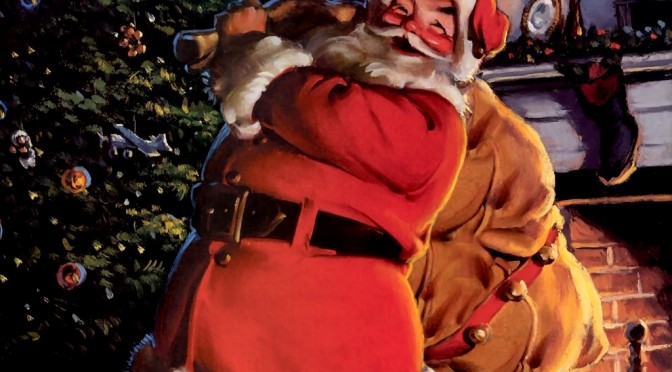
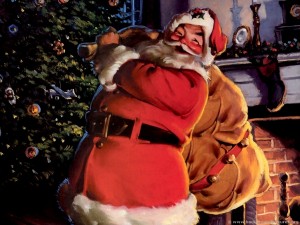
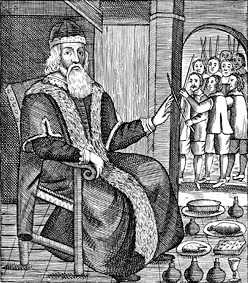

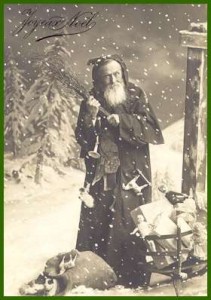
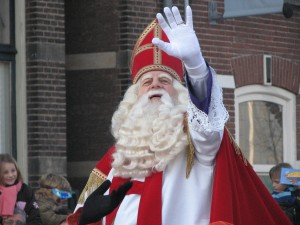

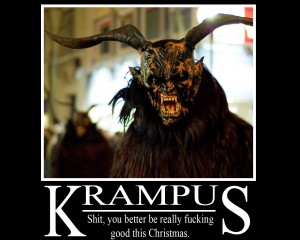
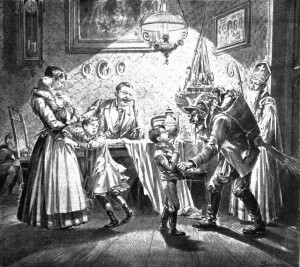
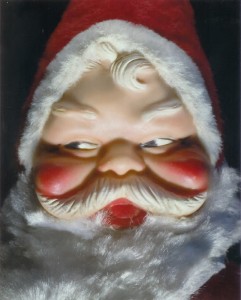


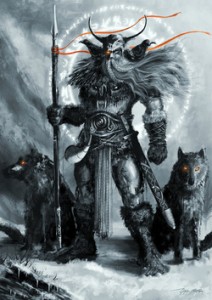
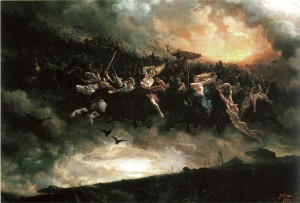





I am sorry. My struggle with ADD has been going on like forever. For a long time I was not even diagnosed and now im just strarting to find out how I can manage my symptoms. On a good day I just suffer from lack of concentration, but if I havent had enough medicine I can easily start to get severely dysfunctional and even confused. Most of the time I just feel other peoples impatience.
My sister says im better now compared with last year, but i put that down to luck. Alcohol will spoil any relationship in your path. If you dont get help you will regret. My self control depends so much on sensing that the way I treat her is making the right impression.
I was about to mark this as Spam. But, on second thought, good messages to be had here.
First, Alcohol can lead people down a dark path if not controlled, so that’s something to keep in mind as you celebrate your holidays.
Second, WordPress draws a lot of interesting crawlers.
Third, if you’re going to automate your spam, at least set it to look for something more than “drinking” and “beer” before it goes posting.
P.S.: I am so straight edge, Canadians have had to force me to drink every time I was in their country. So your settings are WAY off.
P.P.S.: I went to your website, first thing I see is an article about impulsive decisions and a lack of attention to detail. Not only am I not going to mark it as spam, I might even frame it.
Thx. Probably hard to read for any non danish native. But usefull information there I hope. I will try to make a site in english (impulsiveness.net) with the same standard.
Happy that the hollidays are now officially over. Not a happy time for everyone!